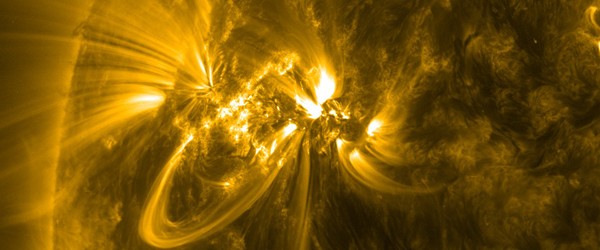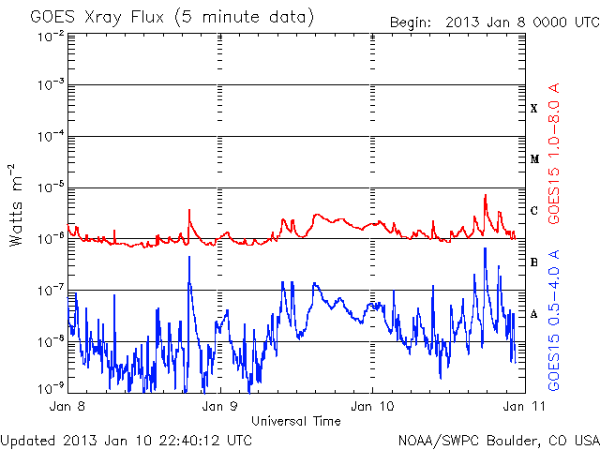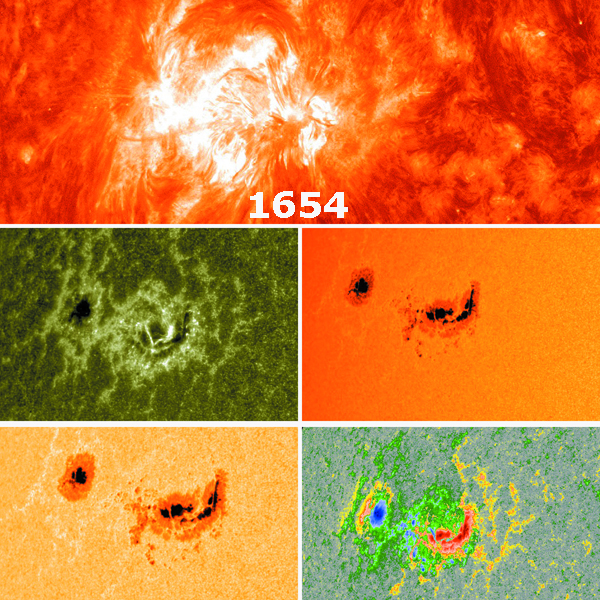Source: The Watchers - 1/11/13, By Chillymanjaro

Large AR 1654 is rotating into more geoeffective position. This large group consists of two main cores, in which the leader spot appears to be the most complex. Also, a new line of sunspots looks to be forming within the center of the cluster. The two dark cores, connected by a canopy of strong magnetic fields, are each big enough to swallow Earth four times over.
SIDC expects solar activity to rise from eruptive to active levels with M class flares likely from AR 1654, and C class flares possible from ARs 1650 and 1652.
NOAA/SWPC forecasters estimate 50% chances of M-class and 5% chances of X-class solar flares in the next 24 hours. Geomagnetic conditions are currently quiet and are expected to remain so for the next 48 hours.
Featured image: AR 1654 seen by SDO’s AIA 171



